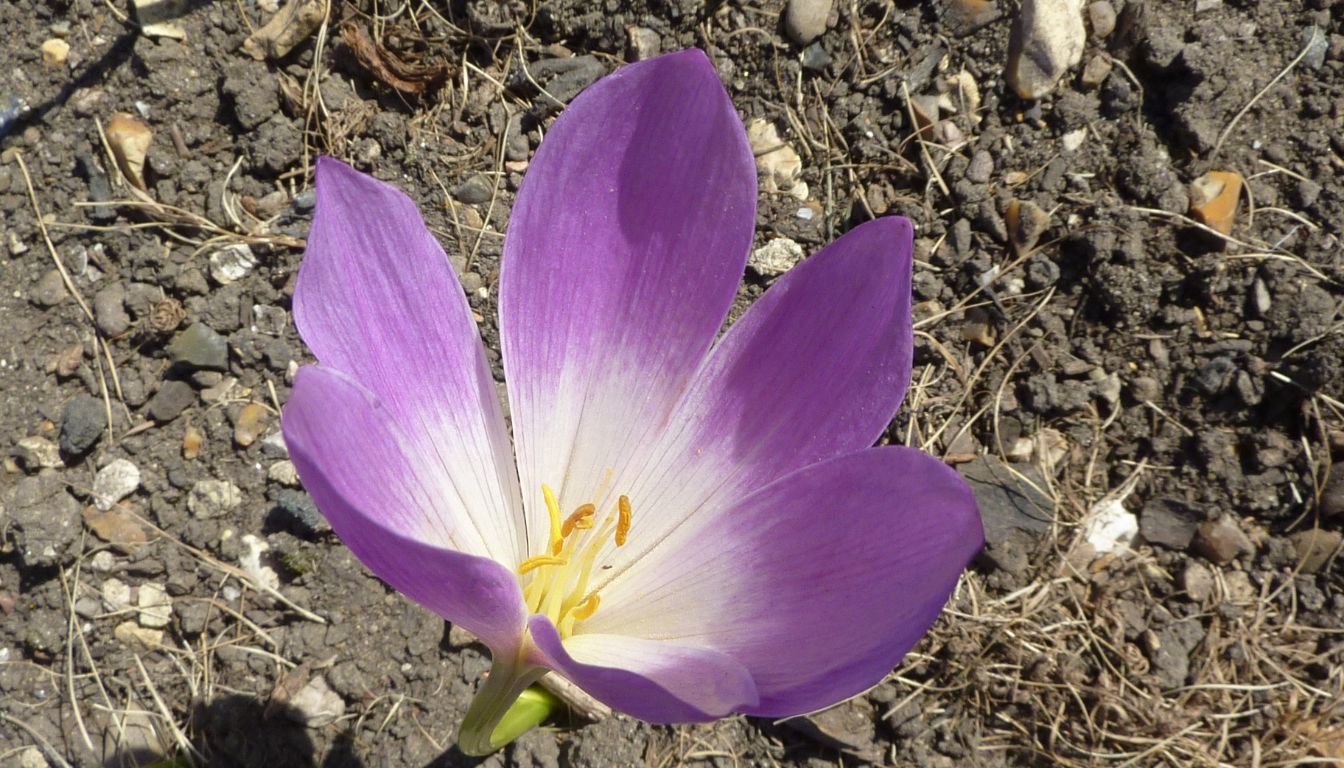Imagine stepping into your kitchen and grabbing a pinch of the world’s most expensive spice, saffron, harvested right from your backyard. Growing saffron at home isn’t just a dream; it’s a rewarding journey that transforms your garden into a vibrant source of culinary delight. With its rich flavor and stunning golden hue, saffron elevates any dish, making it a must-have for any home chef.
I’ve discovered that cultivating saffron is easier than you might think. All it takes is a little knowledge and the right conditions. Whether you have a spacious garden or a cozy balcony, you can create the perfect environment for these delicate crocus flowers. Let’s explore how to grow saffron at home and unlock the secrets to this luxurious spice, turning your culinary creations into masterpieces.
Benefits Of Growing Saffron At Home
Growing saffron at home offers numerous advantages, ranging from culinary delights to health benefits. This vibrant spice enhances any dish and provides a unique gardening experience.
Culinary Uses – How to Grow Saffron at Home: A Simple Gourmet Guide
Saffron stands out in the kitchen. I add it to risottos, paellas, and even desserts, transforming ordinary meals into extraordinary dishes. Its rich flavor and golden hue elevate recipes. A pinch can turn a simple dish into a gourmet feast. Plus, when I use homegrown saffron, I control quality and freshness, ensuring every meal shines.
Medicinal Properties
Saffron’s medicinal benefits catch my attention. It contains antioxidants that boost overall health. Research suggests it may help improve mood and enhance memory. Some studies indicate it can support heart health and may even aid in digestion. I appreciate having a spice that not only adds flavor but also contributes to wellness. Growing saffron provides these benefits right from my garden, making it even more rewarding.
Ideal Conditions For Saffron Cultivation

Growing saffron at home requires specific conditions to thrive. To enjoy a bountiful harvest, understanding the climate and soil preferences is essential.
Climate Requirements – How to Grow Saffron at Home: A Simple Gourmet Guide
Saffron prefers a Mediterranean climate. I love its sunny disposition, as it flourishes in warm, dry weather and doesn’t appreciate excessive rain. The ideal temperature range is between 60°F and 70°F. As temperatures dip below 40°F, saffron can struggle to survive. A little chill can be okay, but it’s best to protect the bulbs from frost. Additionally, this spice likes well-defined seasons, allowing a dry period during summer for the bulbs to rest. If you’re in a cooler climate, that’s okay, just consider growing saffron in pots you can move indoors during harsh weather.
Soil Preferences
Soil can make or break your saffron garden. I always opt for well-draining soil rich in organic matter. Sandy or loamy soil works wonders for saffron. Avoid heavy clay soils that retain excess moisture. Saffron bulbs are prone to rot if they sit in waterlogged soil. A slightly acidic to neutral pH, around 6 to 7, suits saffron perfectly. Before planting, I often mix in compost to enhance drainage and nutrient content. With the right soil conditions, saffron thrives and rewards me with its golden threads.
Growing saffron can be an enjoyable adventure. It requires attention and care, but the culinary rewards are worth it. With the right conditions, I’ll turn my garden into a saffron paradise.
Step-By-Step Guide To Grow Saffron At Home
Growing saffron at home brings joy and flavor to the kitchen. Follow these steps to create an abundant harvest.
Selecting The Right Crocus Bulbs
Start with the best crocus bulbs for saffron. Look for varieties like Crocus sativus. You need healthy, fat bulbs, usually about 10-12 cm in diameter. Buy bulbs from reputable suppliers. Purchasing from trusted growers ensures you get high-quality stock. Inspect bulbs for signs of rot or damage. Healthy bulbs guarantee a better yield.
Planting Techniques – How to Grow Saffron at Home: A Simple Gourmet Guide
Next, it’s time to plant. Choose a spot with full sun and well-draining soil. Space bulbs a good 6 inches apart. Plant them about 4 inches deep to protect against frost. Water thoroughly after planting, but don’t drown them.
During the growing season, saffron prefers occasional watering. Too much water causes rot, and that’s a party no one wants. As blossoms appear in the fall, enjoy the beauty. Harvest when flowers open, typically in October or November. Gently pluck the vibrant red stigmas. Each flower produces only three stigmas, so collect them delicately.
With these straightforward steps, you’ll soon enjoy homegrown saffron. Celebrate your efforts with a delicious saffron-infused dish that impresses everyone.
Common Challenges In Saffron Cultivation

Growing saffron can be thrilling, but a few challenges can crop up. Knowing what to expect helps in tackling them effectively.
Pests And Diseases – How to Grow Saffron at Home: A Simple Gourmet Guide
Pests like aphids and snails can munch on saffron plants if you’re not careful. These little guys may seem harmless, but they can destroy your blooms. I use organic insecticides or introduce beneficial insects, such as ladybugs, to keep those pests at bay. Fungal diseases like corn rot can also occur, especially in overly wet conditions. I make sure the soil drains well and avoid overwatering my saffron plants. Healthy bulbs go a long way in preventing problems.
Weather Variability
Saffron loves stable weather, but nature doesn’t always cooperate. Sudden frost can harm your budding flowers, while too much rain can lead to rot. I check the forecast before blooms appear and use frost cloths for protection when temperatures drop. If unexpected rain comes, I adjust my watering schedule. Adapting to the weather ensures my saffron thrives regardless of nature’s whims.
Harvesting And Storing Saffron
Harvesting saffron requires timing and care. The best time to harvest is in early to mid-fall when the flowers bloom. I check for bright purple blossoms in my garden, signaling that it’s time. Harvesting happens in the morning after the dew dries but before the sun gets too hot. This ensures the flowers don’t wilt.
When To Harvest – How to Grow Saffron at Home: A Simple Gourmet Guide
I look for fully open flowers. Each flower typically produces three bright red stigmas, which are the saffron threads. I gently pluck the stigmas with my fingers or use tweezers to avoid damaging the flower. An entire harvest can yield around 2,000 threads from about 150 flowers. It’s a rewarding process that takes some patience. If your flowers bloom over several days, I recommend harvesting them as they appear to maintain freshness.
Proper Storage Techniques
Storing saffron correctly is vital for preserving its flavor and color. After harvesting, I lay the saffron threads on a paper towel in a cool, dark place. I let them dry for a few hours to remove any moisture. Once dried, I store the threads in an airtight container. Glass jars work well because they protect the saffron from light and air. I keep my jars in a pantry or cupboard away from heat sources.
Using these simple methods makes sure my saffron remains flavorful for months. It has amazing versatility in recipes, from sweet dishes to savory ones. Storing saffron properly prevents it from losing its potency, which is crucial since it’s prized for its rich taste and color. With these tips, my saffron stays ready for culinary adventures.
Before You Go – How to Grow Saffron at Home: A Simple Gourmet Guide

Growing saffron at home is a fulfilling journey that combines gardening with culinary creativity. It’s exciting to watch your saffron bulbs transform into vibrant flowers while knowing you’re cultivating one of the world’s most prized spices. With the right conditions and care, you can enjoy fresh saffron that elevates your dishes and supports your health.
As you embark on this adventure, remember that patience and attention to detail are key. Whether you’re a seasoned gardener or a beginner, the rewards of homegrown saffron are truly worth the effort. So grab your bulbs and start planting, your culinary masterpieces await!
Don’t forget to add theherbprof.com homepage to your favourites so you don’t miss out on future articles.
References – How to Grow Saffron at Home: A Simple Gourmet Guide
Little Herb Encyclopedia, by Jack Ritchason; N.D., Woodland Publishing Incorporated, 1995
The Ultimate Healing System, Course Manual, Copyright 1985, Don Lepore
Planetary Herbology, Michael Tierra, C.A., N.D., Lotus Press, 1988
Handbook of Medicinal Herbs, by James A. Duke, Pub. CRP Second Edition 2007
The Complete Medicinal Herbal, by Penelope Ody, Published by Dorling Kindersley
Check the Following Article
Effective Natural Remedies for Post-Workout Recovery
Revitalize Your Health with a Simple Natural Detox Guide
The Beauty and Symbolism of Japanese Garden Flowers
Why Green Tea is the Perfect Energy Drink Alternative
Frequently Asked Questions – How to Grow Saffron at Home: A Simple Gourmet Guide
What is saffron, and why is it expensive?
Saffron is the dried stigma of the Crocus sativus flower, known for its vibrant color and unique flavor. It is expensive because the harvesting process is labor-intensive; each flower produces only three stigmas, and it takes thousands of flowers to produce a small amount of saffron.
Can I grow saffron at home?
Yes, you can grow saffron at home! It requires minimal space, making it suitable for gardens or balconies. With the right conditions, such as well-drained soil and a suitable climate, anyone can cultivate this luxurious spice.
What are the ideal growing conditions for saffron?
Saffron thrives in a Mediterranean climate with warm, dry weather, ideally between 60°F and 70°F. The soil should be well-draining, rich in organic matter, and have a slightly acidic to neutral pH. Protecting saffron bulbs from frost is also essential.
How do I plant saffron bulbs?
Select healthy Crocus sativus bulbs and plant them in a sunny spot with well-draining soil. Space the bulbs six inches apart and plant them four inches deep. Water them carefully to prevent rot and ensure they receive adequate sunlight.
When should I harvest saffron?
Harvest saffron in early to mid-fall when the flowers bloom. It’s best to collect the stigmas in the morning after the dew has dried to keep the flowers fresh. Each flower produces three bright red stigmas.
How do I store saffron properly?
To store saffron, dry the threads in a cool, dark place and keep them in airtight glass containers. This preserves their flavor and potency, allowing you to enjoy their culinary benefits for months.

